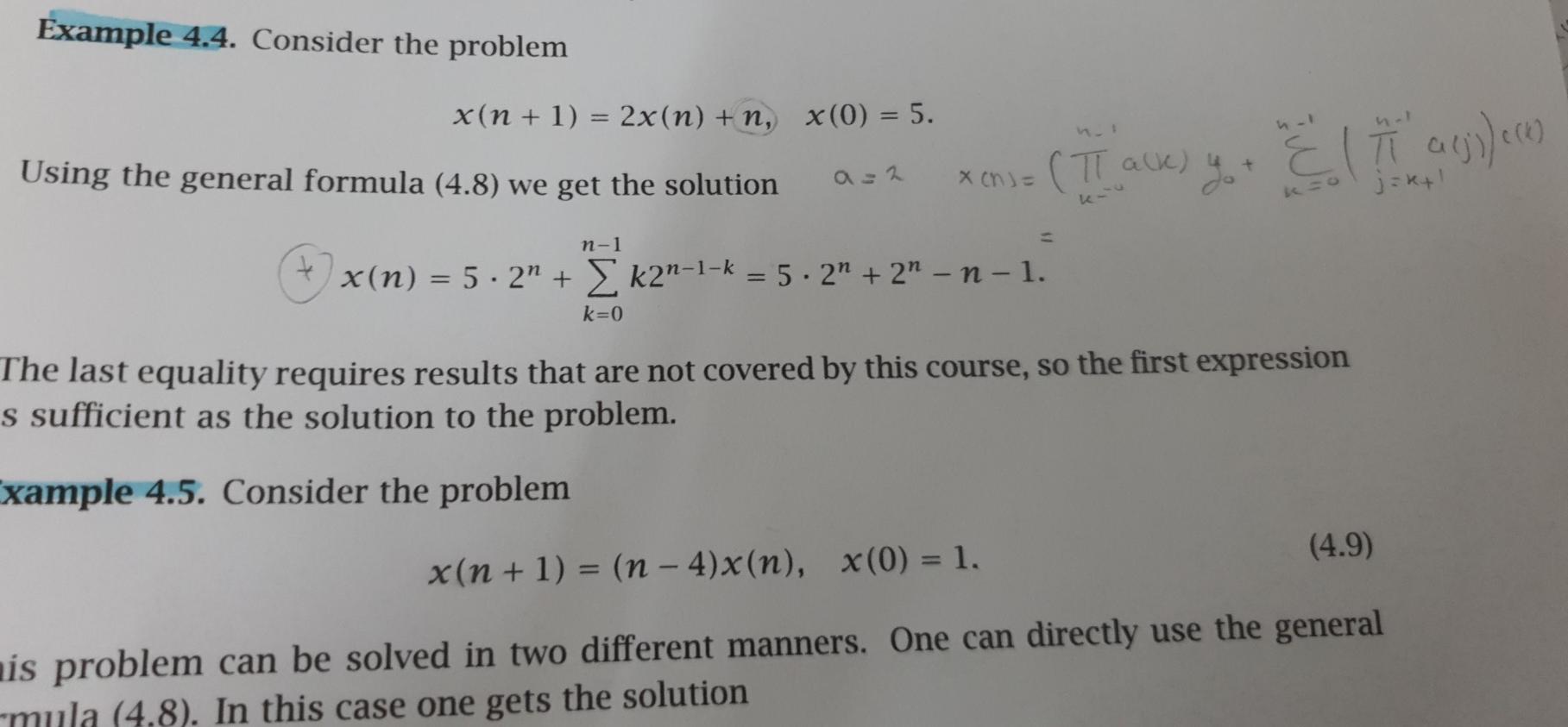
Example 4.4. Consider the problem x(n + 1) = 2x(n) + n, x(0) = 5. Using the general formula (4.8) we get the solution x cn = (T alk) n-1 + x(n) = 5.2" + k2n-1-k = 5.2"+2" - n - 1. k=0 The last equality requires results that are not covered by this course, so the first expression s sufficient as the solution to the problem. xample 4.5. Consider the problem (4.9) x(n + 1) = (n - 4)x(n), x(0) = 1, is problem can be solved in two different manners. One can directly use the general mula (4.8). In this case one gets the solution
Theorem 4.2. Let a(n) and c(n), n e No, be real sequences. Then the linear first order difference equation (4.7) x(n + 1) = a(n)x(n) + c(n) with initial condition x(0) = yo has the solution n-1 y (n) = (II a(k)) yo + ( 11 a(j) e(k) (4.8) k=0 k-0 V-k+1 The solution is unique.
没有找到相关结果